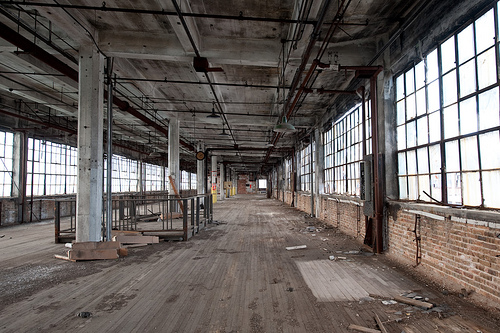
In a speech this afternoon to the Foreign Correspondent’s Association, Julia Gillard outlined her glorious plan for the future of Australia knowledge economy:
The Asian Century will also involve difficult adjustments, and the high dollar is a clear example of this.
It’s painful to many sectors.
But like Germany under the towering deutschmark in the days before the Euro, a high currency need not be a barrier to making products and services of such quality that our partners still want to buy them.
The sustained strength of our dollar is now a feature of the economic landscape – on a trade weighted basis, it recently rose to its highest level since 1985.
And it may persist for some time given Australia’s status increasingly as something of a safe haven currency – Australian dollar to US dollar exchanges are now estimated to be the fifth highest traded currencies in the world.
While the high dollar has put significant competitive pressure on many industries, the answer to this is not low wages; in a high-skill advanced economy, it should never be.
It takes a more sophisticated approach – policy-rich, detailed, comprehensive.
That’s why my Government has a plan for Australian jobs which has just those features.
A plan that means we will be seizing the opportunity in our region as well as the opportunities at home.
It’s a plan to make sure that we have many diverse sources of strength in our economy.
The next election must be a referendum on policy.
It must be a test of who has a blueprint for our nation’s future in the Asian Century.
And it is only Labor that has that plan.
A plan for the future that rests upon five pillars which I’ve described many times:
Skills and education:
It’s not only about uplifting the horizons of every individual.
Independent modelling in 2010 showed that our reforms could provide an overall benefit to the national economy of around $4,000 per person per year.
We cannot win prosperity or create opportunity in this Asian Century if these reforms are stopped.
High speed broadband for all Australians:
Each 10 percentage point increase in broadband penetration is estimated to add around $20 billion to Australia’s GDP.
Without fibre to the premises, a vision only Labor will realise, we will be left in the horse and buggy lane while other nations zoom past us in formula one cars.
Clean energy and innovation:
In the first six months since our carbon price was implemented, electricity emissions went down by 8.6 per cent compared to the same six month period the previous year.
And the volume of energy from renewable sources increased by almost 30 per cent, creating new jobs, and helping to save the planet along the way.
Our nation can’t afford the costs of trying to repeal carbon pricing.
Competition and deregulation:
A Productivity Commission analysis of 17 of our Seamless National Economy reforms estimated that business costs would be cut by $4 billion a year.
Our energy market reforms announced last December will alleviate the burden of future household electricity bills by around $250 a year.
This major reform cannot be delivered if the problem the reform is directed at is denied.
Tax reform:
We’ve increased by six and a half times the tax write-off that small businesses get on new asset purchases – an investment injection of nearly $1 billion into the job-creating sector of our economy.
We’ve delivered three rounds of tax cuts. And we’ve tripled the tax free threshold so that 1 million people no longer lodge any tax return at all.
This means that a worker on $50,000 is paying $2,000 less in tax than they did in 2007.
Small businesses and families can’t afford the tax hikes being promised by the other side of politics.
These are the five pillars this Government has identified as key to increasing jobs, prosperity and productivity.
These support our plan for Australian jobs.
A plan to back Australian firms to win more work at home so that large projects will need to engage in Australian Industry Participation Plans, creating new local jobs on existing projects.
A plan to support Australian industry to increase exports and win new business abroad.
A plan to invest in up to 10 Industry Innovation Precincts which will bring together researchers, innovators, sources of new knowledge and link them with businesses.
Transforming this new knowledge into new products, new ways of doing things, seizing innovation, creating the jobs of the future.
A plan to grow small businesses, creating new mid-sized businesses and helping them to access and prosper on world markets.
This is a serious plan for our nation; a serious plan for our future.
Surely there is some stuff in here that I support: the NBN, carbon pricing and education investment are three, though it is highly debatable that Labor is delivering the third.
But framing this as a plan for “a high-skill advanced economy” that can see off a high dollar is a bit rich given the parlous state of the non-mining tradeable sector. Services exports haven’t grown in many years. Manufacturing has been in recession for two and the latest capital spending intentions are currently running at 1980s levels.
This is not a plan to re-skill or go hi tech, it’s simply folding up shop.
A Labor government chock full of unionists that deliver high rhetoric side by side with obvious failure really sticks in the craw.

